Paint is a software program used to draw/edit images and is available on all the most used operating systems. Some paint applications come by default in all these platforms, such as Libredraw on Linux. Other than this, Linux supports various open-source paint applications for Linux users.
This post will demonstrate the installation methods and the key features of 7 open source paint applications for Linux.
Let’s have a look at the first one:
Pinta
Pinta is a free, open-source platform for drawings and editing images. The “Pinta” is designed for GNU/Linux, Mac, and Windows users. It is developed by “Cameron White”. The app is perfectly suitable for Viewers & Editors in the Design & Photo category. It provides all the common graphic editing and design tools such as paintbrush, cloning stamp, different selection types, paint can, gradients, etc.
Key Features
Some of its essential key features are listed below:
- User-friendly for all types of users.
- Runs on all major platforms, such as Windows, Mac, and Linux.
- Provides the “Layering” feature that is beneficial to separate and group elements of an image
- Supports the history and provides the undo feature to restore the previous changes easily.
- Contains a variety of effects for editing images and drawings.
- Supports numerous languages
How to Install Pinta on Linux?
The “Pinta” application can easily install on various Linux distributions. It is available on the snap store and can be installed on various Linux distributions via the following command:
For Linux distributions that have snap enabled:
$ sudo snap install pinta

The interface of the Pinta tool can be seen below:
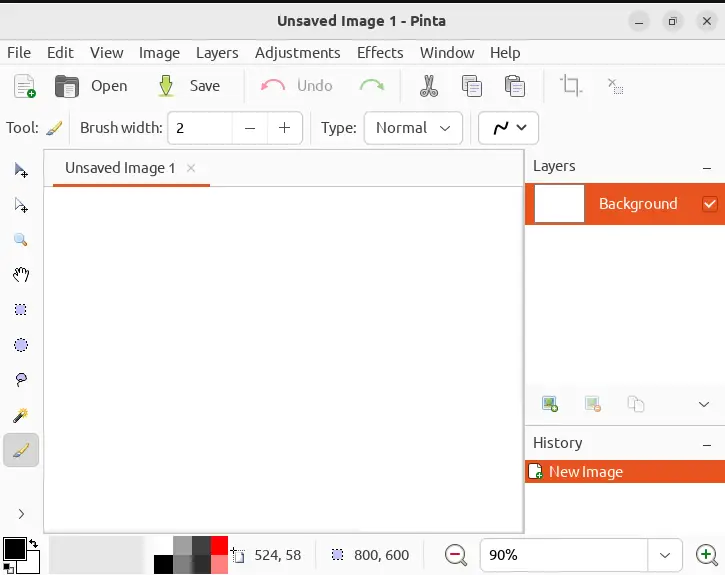
How to Remove Pinta on Linux?
The Pinta tool can be removed by issuing the command provided below:
$ sudo snap remove pinta

KolourPaint
The “KolourPaint” is a very easy and free program by KDE. It is also a free open-source drawing tool that is available for Linux users. Moreover, it also runs on Windows operating system. It is used to edit images very quickly. The “KolourPaint” application is used to draw paintings and drawings, edit photos and apply effects, make icons and logos, and take screenshots and edit them. Here some of its key features are described
Key Features
- Selection option
- Cut in Kolor paint
- Resize in KolourPaint
- Mirror image in KolourPaint
- Skew in KolourPaint
- Resize in KolourPaint
- Colour pallet in KolourPaint
How to Install the KolourPaint Application?
The “KolourPaint” application can easily be installed on various Linux distributions like Redhat, Fedora, Arch, and Ubuntu via the following commands:
For Linux distributions that have snap enabled:
$ sudo snap install kolourpaint
For Debian/Ubuntu Based:
Open the terminal and enter the below-mentioned command to install “KolourPaint” application:
$ sudo apt install kolourpaint
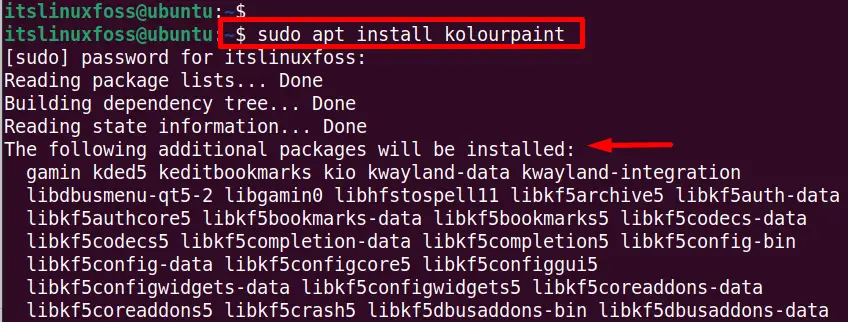
Launch the “kolourpaint” after installing it successfully:
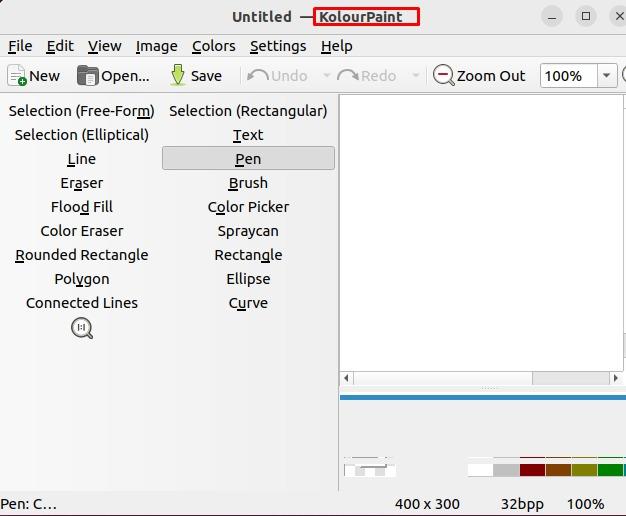
Tux Paint
The Tux paint is a wonderful drawing application for children. Unlike other drawing or painting programs, Tux Paint has a lot of creative tools, such as funny animations and magical effects, which makes it one of the best drawing software. Moreover, it supports a lot of unique magical tool effects such as “MOSAIC”, “KALEIDOSCOPE”, “EMBOSS”, and “LIGHTEN”.
Key Features
Let’s look at its unique key features:
- It needs only basic knowledge about mouse skills.
- Penguin tells more about tools and sub-tools available in the Tux program.
- Images can be saved and loaded directly as thumbnails without using any file name.
- Plays funny sound effects when any tool can be selected.
- It increases children’s creativity because it provides a large variety of design tools
- Facilitates the users to add personalized stamps to the drawing.
How to Install Tux Paint Application on Linux?
In various Linux distributions, the “tux-paint” application can be installed by the following commands that are written below:
For Linux distributions that have snap enabled:
$ sudo snap install tuxpaint
For Debian/Ubuntu Based:
In Debian Based distribution the “tux-paint” application with the help of the “apt install” command that is mentioned below:
$ sudo apt install tuxpaint
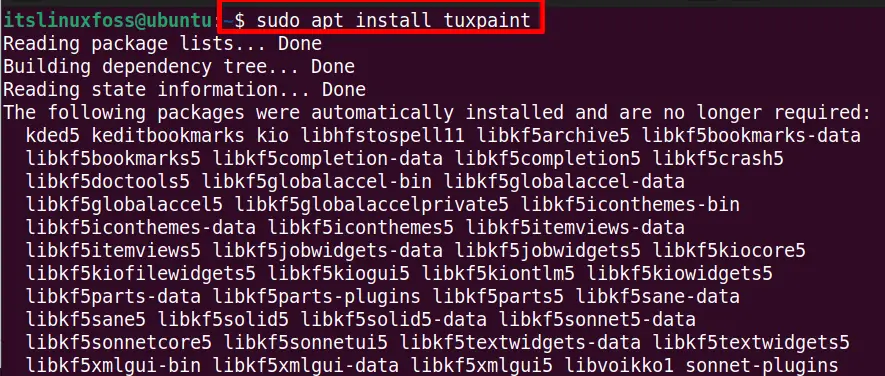
The “Tux Paint” is installed successfully and its interface looks like:
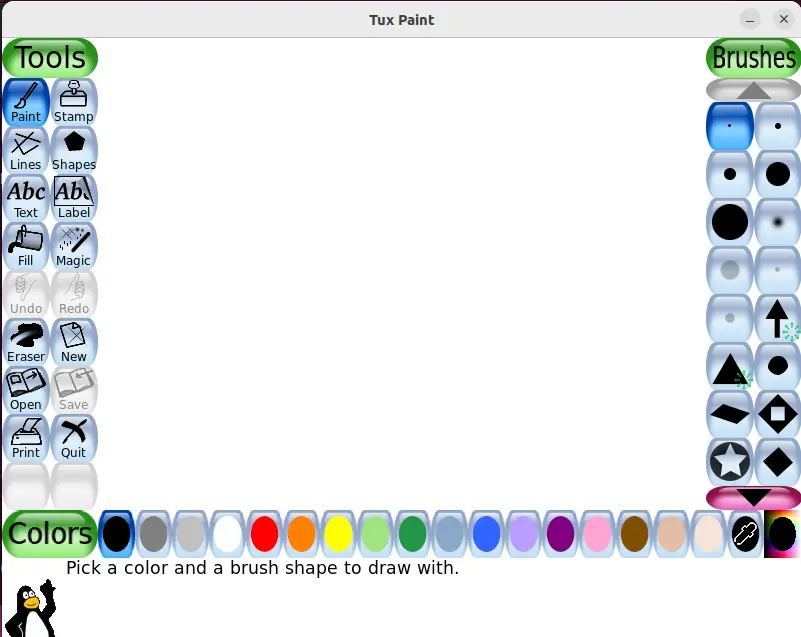
How to Remove Tux Paint on Linux?
The Tux Paint drawing tool can be quickly removed via the provided command in the terminal:
$ sudo snap remove tuxpaint #For snap enabled distros
$ sudo apt remove tuxpaint #For Debian/Ubuntu
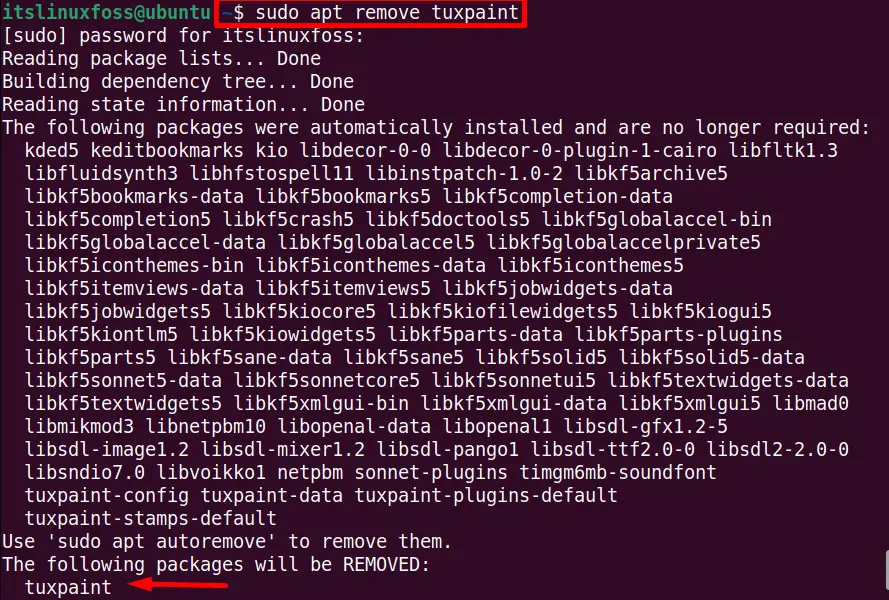
Drawing
The “Drawing” is the alternative paint application of “MS Paint” in Linux. It has a simple user interface but contains unique features. These features include the free pencil tool that is used for freehand drawing. Moreover, it also provides the features such as “blur” and “transparency”. The user can also get the features for basic image editing. Some of its unique key features are described below:
Key Features
- Supports the PNG, BMG, and JPEG files
- Displays the traditional user interface
- By default enables the highlighter
- Supports a list of languages like Italian, Japanese, Danish, etc.
- Offers the tools to transform the canvas and select the image.
How to Install the Drawing Application?
The following commands are helpful to quickly install the “Drawing” application for various Linux distributions such as Redhat, Fedora, Arch, and Ubuntu mentioned below:
For Linux distributions that have snap enabled:
$ sudo snap install drawing
For Debian Based:
$ sudo apt install drawing
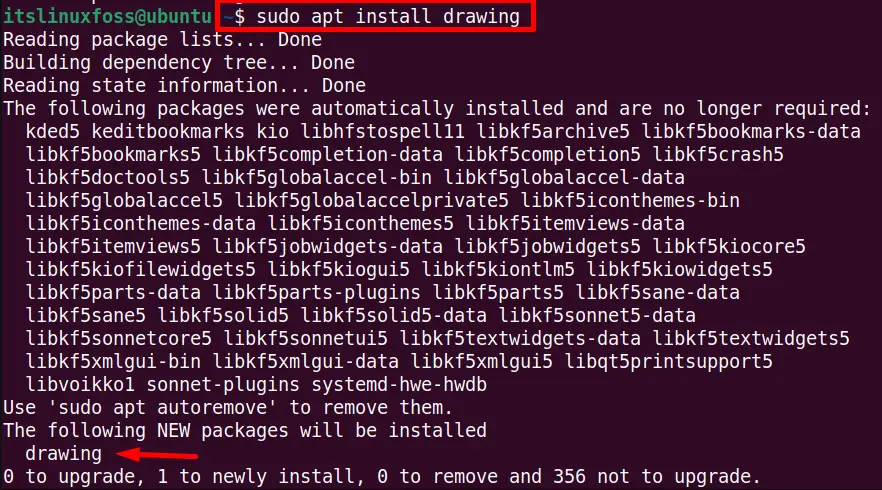
The interface of the “drawing” tool is displayed below:

How to Remove Drawing on Linux?
When the usage of the “drawing” application is completed, the user can use the “removal” command for removing it from a specific Linux distribution if installed through snap):
$ sudo snap remove drawing #For snap enabled distros
$ sudo apt remove drawing #For Debian/Ubuntu
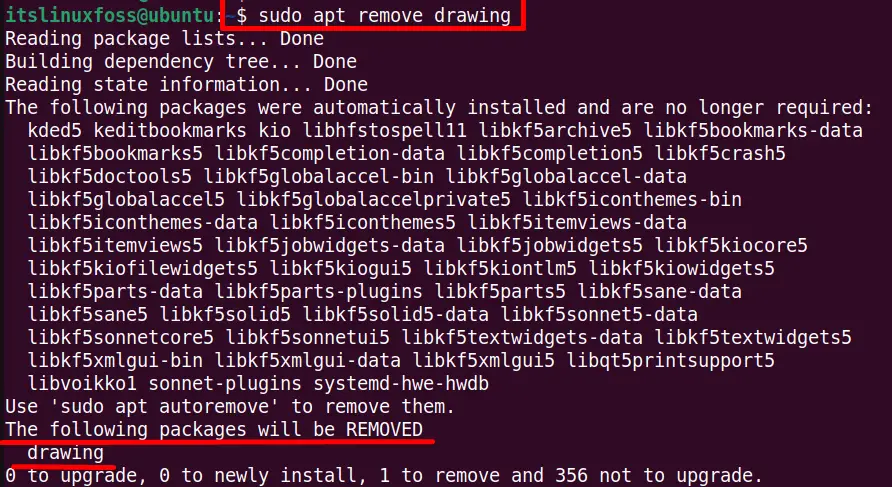
Krita
Krita is an open-source professional graphics editor designed primarily for digital painting and animation purposes. The Krita is a user-friendly drawing software that can edit photos. Furthermore, it supports many options and unique features, including predefined templates in Krita for painting and sketching.
Key Features
Some of the important features of “Krita” is mentioned below”:
- Supports a list of file format, i.e., pdf, ora, ppm, png, etc.
- Encourages both the layers (grouped hierarchy) and masks (single layer).
- Provides various tools such as “Vector tools”, “Raster tools”, “Guidance tool”, “Canvas tools”, and “Selection tools”.
- Supports the brush engine plugins.
- Provides a variety of filters.
How to Install Krita on Linux?
The Krita support is available on the snap store, which can be availed on various Linux distributions by issuing the following command:
For Linux distributions that have snap enabled:
$ sudo snap install krita

After launching, the following interface is expected:
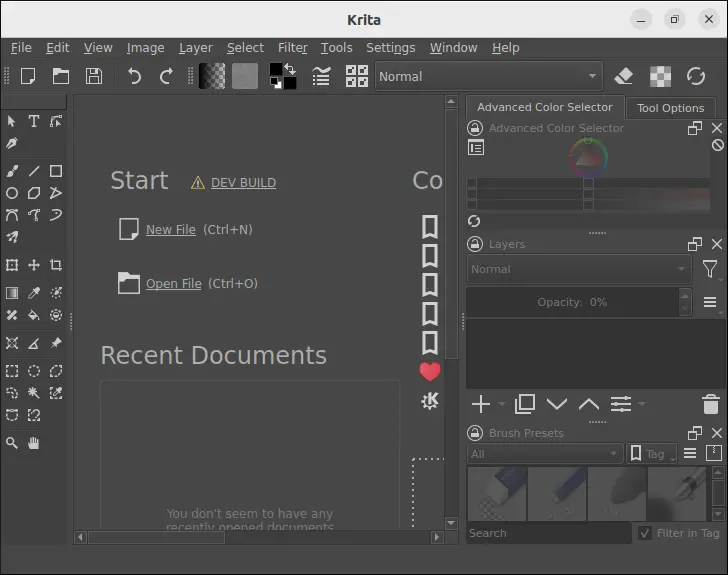
How to Remove Krita on Linux?
To remove Krita from a specific Linux distribution (if installed through snap), use the below-stated command:
$ sudo snap remove krita

Drawpile
The “Drawpile” is another freely open-source paint application. It is used to make or create sketches quickly. In the “Drawpile” application, different people can work together on the same image, that’s why it is a collaborative pain tool. It facilitates the users to share the sketches easily. The “Drawpile” application has so many features. Still, here in this section, some of its important key features are described:
Key Features
- Real-time collaboration
- Supports the recorded drawing sessions
- Provides a lot of blending modes
- For hosting the shared sessions contains the built-in servers
How to Install the DrawPile Application?
Run the following commands to install the draw pile application tool according to your Linux distribution such as Redhat, Fedora, Arch, and Ubuntu mentioned below:
For flatpak supported Linux distros:
$ flatpak install flathub net.drawpile.drawpile
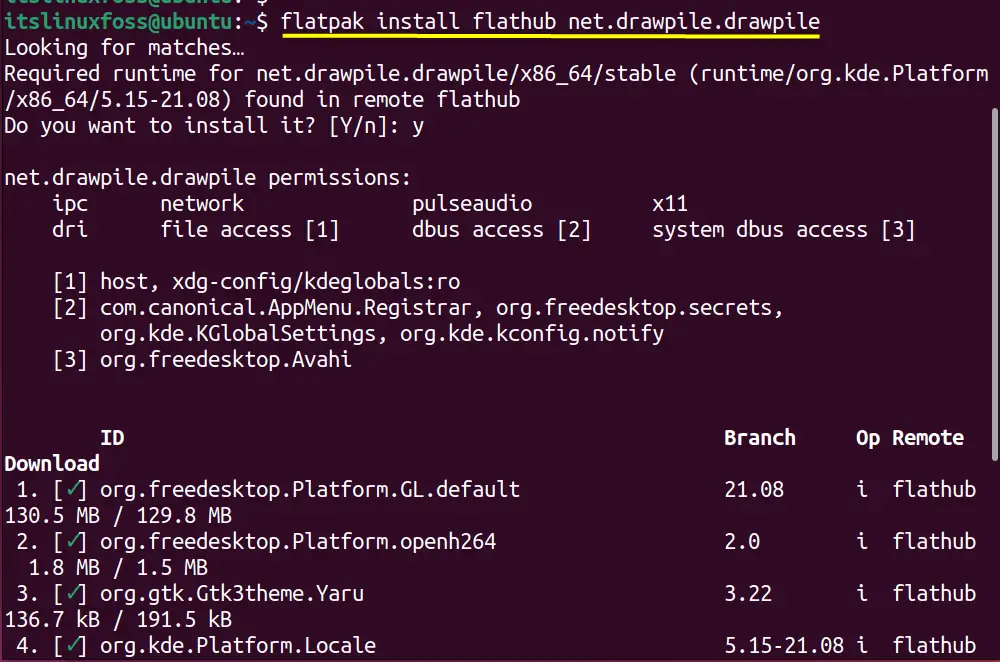
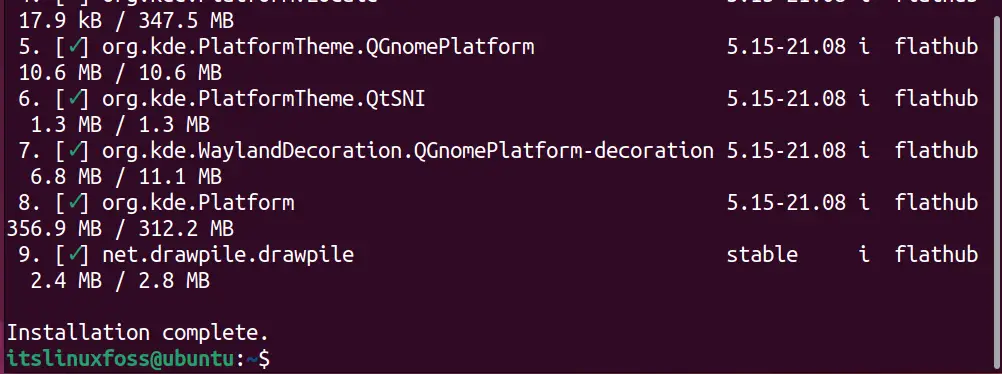
The installation of the “drawpile” is completed successfully.
How to Remove the DrawPile Application?
The drawpile can be removed using the flatpak as follows.
$ flatpak uninstall net.drawpile.drawpile
MyPaint
The “MyPaint” application is a freely available open-source cross-platform designed for digital painters. This application is widely used for professional artwork. However, it is compatible with well-reputed platforms like Windows, macOS, and Linux. In the beginning, it was totally a simple paint program that supports the editor’s brush ad the canvas. But now it comes with the amazing features that are listed below:
Key Features
- Provides layer management
- Supports the various symmetry modes
- Contains a Simple and reliable interface
- Offers gap detection and offset feather flood fill functionality.
How to Install the MyPaint Application?
The “MyPaint” application is mostly available in all Linux distributions. If it is not installed then the user can easily be installed on Redhat, Fedora, Arch, and Ubuntu via the following commands:
$ sudo dnf install mypaint #For Fedora/RedHat
$ sudo pacman -S mypaint #For Arch
$ sudo apt install mypaint #For Debian/Ubuntu
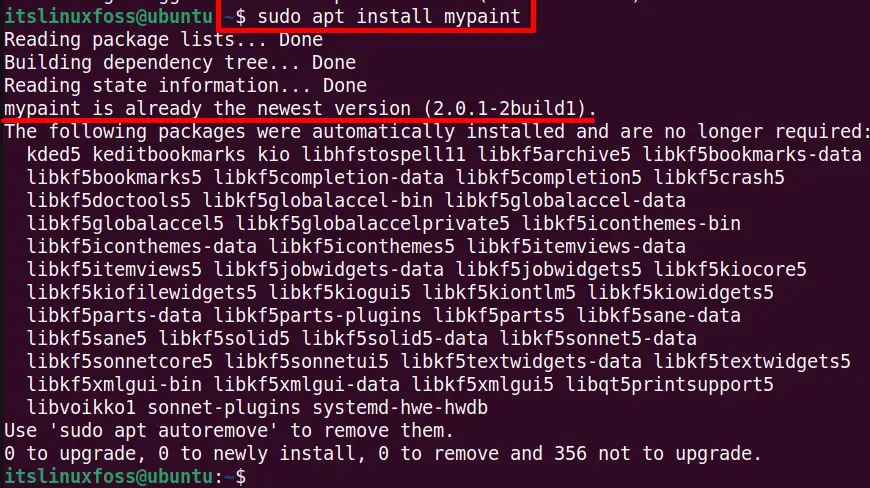
The interface of the “MyPaint” software application is shown below:
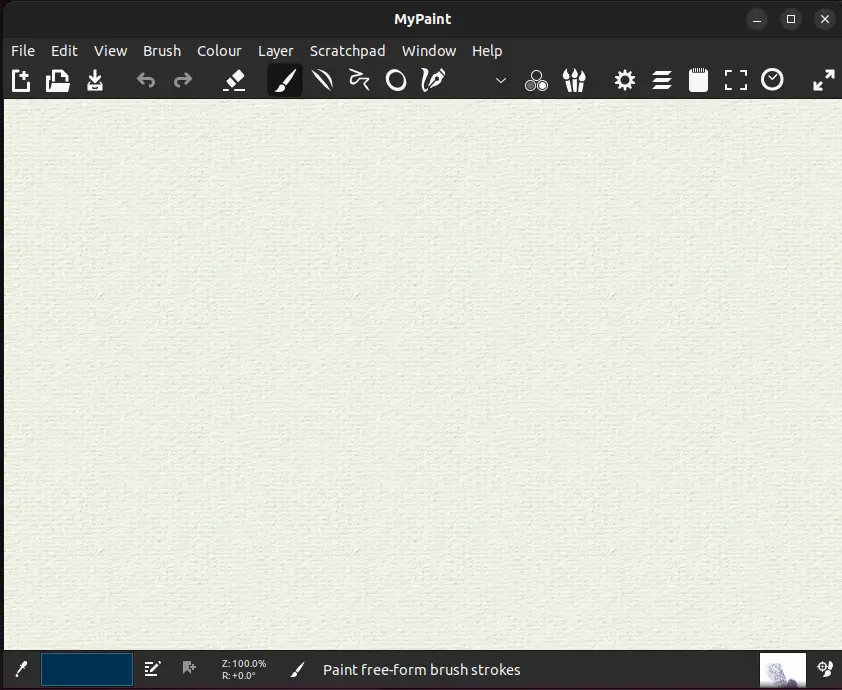
How to Remove MyPaint on Linux?
Execute the “apt remove ” command for removing the “MyPaint” application from the Debian-based Linux distributions:
$ sudo dnf remove mypaint #For Fedora/RedHat
$ sudo pacman -R mypaint #For Arch
$ sudo apt remove mypaint #Dor Debian/Ubuntu-based
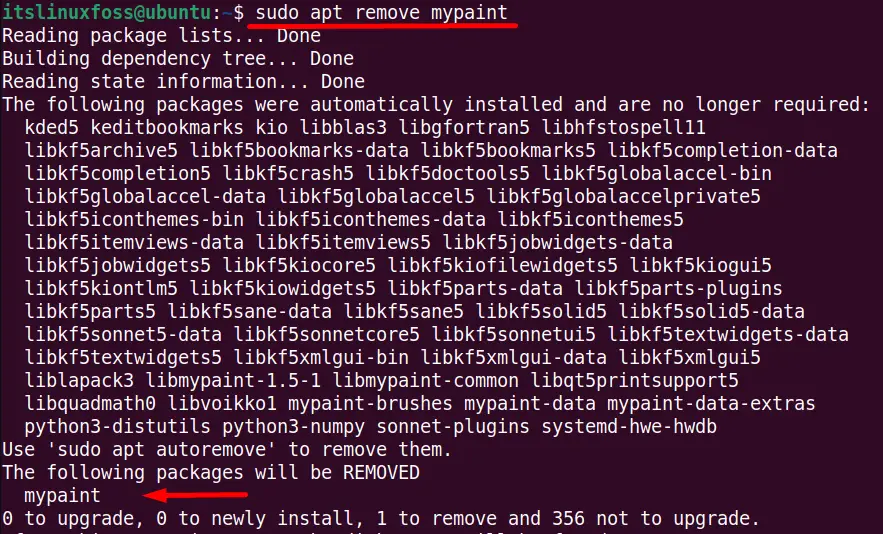
That’s all about this guide.
Conclusion
The “Paint” applications are used to draw and edit images according to the requirements or they are utilized to create a drawing on the canvas. This guide illustrated a list of open-source paint applications that are helpful for Linux users. This post has listed down the best 7 open source paint applications for Linux users.
